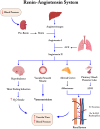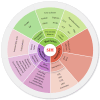Liver injury in COVID-19: an insight into pathobiology and roles of risk factors
- PMID: 38491495
- PMCID: PMC10943793
- DOI: 10.1186/s12985-024-02332-y
Liver injury in COVID-19: an insight into pathobiology and roles of risk factors
Abstract
COVID-19 is a complex disease that can lead to fatal respiratory failure with extrapulmonary complications, either as a direct result of viral invasion in multiple organs or secondary to oxygen supply shortage. Liver is susceptible to many viral pathogens, and due to its versatile functions in the body, it is of great interest to determine how hepatocytes may interact with SARS-CoV-2 in COVID-19 patients. Liver injury is a major cause of death, and SARS-CoV-2 is suspected to contribute significantly to hepatopathy. Owing to the lack of knowledge in this field, further research is required to address these ambiguities. Therefore, we aimed to provide a comprehensive insight into host-virus interactions, underlying mechanisms, and associated risk factors by collecting results from epidemiological analyses and relevant laboratory experiments. Backed by an avalanche of recent studies, our findings support that liver injury is a sequela of severe COVID-19, and certain pre-existing liver conditions can also intensify the morbidity of SARS-CoV-2 infection in synergy. Notably, age, sex, lifestyle, dietary habits, coinfection, and particular drug regimens play a decisive role in the final outcome and prognosis as well. Taken together, our goal was to unravel these complexities concerning the development of novel diagnostic, prophylactic, and therapeutic approaches with a focus on prioritizing high-risk groups.
Keywords: SARS-CoV-2; COVID-19; Liver injury; Pathobiology mechanisms; Risk factors.
© 2024. The Author(s).
Conflict of interest statement
The authors declare no competing interests.
Figures





References
Publication types
MeSH terms
LinkOut - more resources
Full Text Sources
Medical
Miscellaneous

